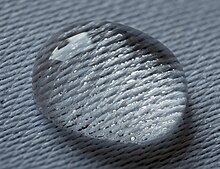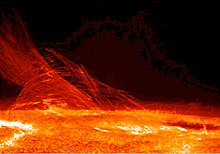Term: Surface
Definition and Types of Surfaces
– A surface refers to the outermost layer of an object.
– It is the boundary that separates an object from its surroundings.
– Surfaces can be smooth, rough, flat, curved, or irregular.
– They can be made of various materials such as wood, metal, or fabric.
– Surfaces can have different textures, colors, and patterns.
– There are two main types of surfaces: natural and man-made.
– Natural surfaces include those found in nature, such as rocks, water, and plants.
– Man-made surfaces are created by humans, like roads, buildings, and furniture.
– Surfaces can also be categorized based on their functionality, such as reflective, absorbent, or non-slip.
– Some surfaces are designed for specific purposes, like the smooth surface of a mirror for reflection.
Properties of Surfaces
– Surfaces can have different physical properties, such as hardness, smoothness, or flexibility.
– The color of a surface is determined by the wavelengths of light it reflects.
– Surfaces can absorb, reflect, or transmit light depending on their properties.
– Texture is an important property of surfaces, which can be rough, bumpy, or silky.
– Surfaces can also have different levels of transparency or opacity.
Perception of Surfaces
– The perception of surfaces is influenced by visual cues, such as shading, texture, and motion.
– Our brain uses these cues to infer the three-dimensional shape and material of a surface.
– Gestalt principles, such as figure-ground relationship, also play a role in perceiving surfaces.
– Illusions can occur when our brain misinterprets the cues and perceives a surface differently.
– Perception of surfaces is essential for object recognition and navigation in the environment.
Applications of Surfaces
– Surfaces are crucial in various fields, including architecture, interior design, and product manufacturing.
– Different surface treatments, like painting or coating, can enhance the durability or aesthetics of an object.
– Surfaces with specific properties, such as anti-bacterial or anti-slip, are used in healthcare and safety applications.
– Surfaces in digital displays, such as touchscreens, play a vital role in user interaction.
– Understanding surface properties is important in fields like materials science, engineering, and art.
Mathematics and Science of Surfaces
– A surface is a mathematical model of a common concept.
– It is a generalization of a plane and may be curved.
– There are different definitions of surfaces depending on the context.
– Surfaces are topological spaces of dimension two.
– Coordinate systems can be defined on surfaces.
– Many surfaces in physics and chemistry are interfaces.
– Surfaces can be the boundary between two fluids or a solid.
– At the microscopic scale, surfaces may have thickness and holes.
– Wavefronts and reflectors are examples of surfaces in physics.
– Surfaces are studied in surface science and metrology.
– Creating realistic simulations of surfaces is a challenge in computer graphics.
– Surfaces are used to represent objects in 3D computer graphics.
– Physically-based rendering algorithms enhance surface realism.
– PBR algorithms simulate the interaction of light with surfaces.
– PBR has practical applications in architecture, product design, and simulations.
A surface, as the term is most generally used, is the outermost or uppermost layer of a physical object or space. It is the portion or region of the object that can first be perceived by an observer using the senses of sight and touch, and is the portion with which other materials first interact. The surface of an object is more than "a mere geometric solid", but is "filled with, spread over by, or suffused with perceivable qualities such as color and warmth".



The concept of surface has been abstracted and formalized in mathematics, specifically in geometry. Depending on the properties on which the emphasis is given, there are several non equivalent such formalizations, that are all called surface, sometimes with some qualifier, such as algebraic surface, smooth surface or fractal surface.
The concept of surface and its mathematical abstraction are both widely used in physics, engineering, computer graphics, and many other disciplines, primarily in representing the surfaces of physical objects. For example, in analyzing the aerodynamic properties of an airplane, the central consideration is the flow of air along its surface. The concept also raises certain philosophical questions—for example, how thick is the layer of atoms or molecules that can be considered part of the surface of an object (i.e., where does the "surface" end and the "interior" begin), and do objects really have a surface at all if, at the subatomic level, they never actually come in contact with other objects.
